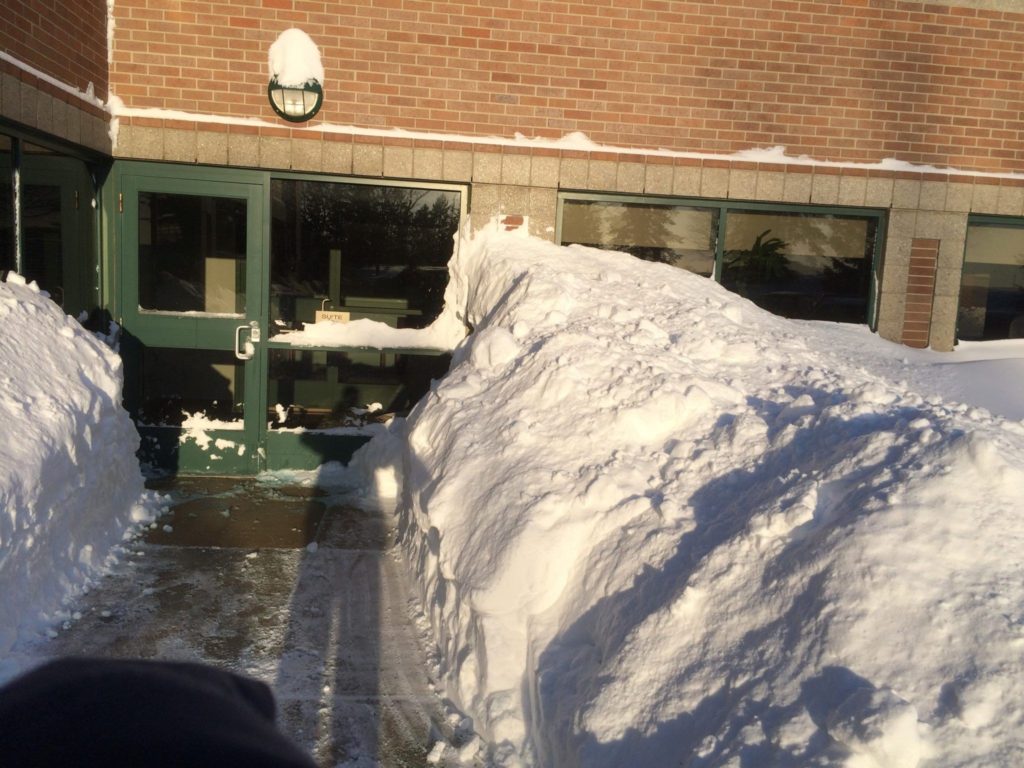When you’ve had a winter like we’ve had this school year, educators panic. Everybody loves a snow day, but 10-15 snow days? Extra days in June don’t adequately make up for the valuable days lost in January and February. The issue becomes, how can we maintain the status quo of learning despite the exceptional weather conditions that we have been under for months now? We didn’t have this conversation during the mild winter season of the 2011-2012 school year, but this year the concept of learning from home on snow days has caught the attention of national publications such as the New York Times and USA Today:
As classrooms become more electronically connected, public schools around the country are exploring whether they can use virtual learning as a practical solution to unpredictable weather, effectively transforming the traditional snow day into a day of instruction. –NYT
Awesome idea! One that is rooted firmly in the customized and personalized tenets of blended instruction. In this case, if the weather makes it difficult for students to commute physically they can commute digitally. But are schools ready to flip the switch right away?
“I’m sure other schools are going to do this, which I would highly encourage,” Hart said. “They were surprised our kids were buying into it, knowing that their friends were sleeping in all day. At the beginning, for our students, they were a little apprehensive about giving up that romanticized idea of a snow day where they can sleep in and drink hot chocolate and get to have fun and sled. But then, once they learned how to manage the day, I think they have completely accepted it.” –USAtoday
Principal Hart talks about his students, “giving up the romanticized idea of a snow day,” but I think more than a shift in attitude is needed here. In order for learning from home (LFH) snow days to be successful, school staff will need to lay the appropriate infrastructure to provide fully online learning for the day. In addition, they will need to give staff and students ample opportunity to practice learning from home so that when inclement weather strikes, all involved can focus on learning. There is much more to learning to learning in online settings than students simply, “learn[ing] how to manage the day.”
In order for LFH days to provide a quality learning experience for teachers and students, a blended class that revolves around an LMS or other teacher built digital learning environment needs to already be in place. There has to be a place online that students go to in order to connect with class participants and interact with learning resources. This place needs to be familiar to students in advance of snow days and ideally, it is central to everyday instruction so that it is extremely familiar. Ill-structured and unfamiliar digital learning environments will lead to disorganized and confusing snow days.
Snow days should not be the only LFH days either. Students, teachers, and administrators will need to be well practiced in commuting from home so that there is a business-as-usual mentality when the school day begins. Just as there are fire drills to prepare students and faculty for one catastrophic event, so too should schools have scheduled LFH days. It would be ridiculous to expect a student who has never experienced an LFH day to work proficiently given the random occurrence of a snow day. Along the same lines, teachers need to have experience teaching remotely in order to provide rich learning opportunities on LFH days.
An obvious concern is the ability of students to get online at home, one that neither of the national articles mention. Blended classes use the face-to-face (F2F) environment to equalize accessibility for students. When that F2F environment is unavailable, inequalities in student access arise.
While device usage might not always be 1:1 in F2F, the proximity to other students makes sharing an acceptable solution to get 100% of students into the online environment. If students are expected to stay home sometimes, 1:1 becomes a requirement for every student. To ensure full participation, the school may need to supply students with the devices and ensure internet access in every family’s home. This is something that can obviously be done and if a school was already deliberating over a 1:1 initiative, this would fall on the benefit side of the cost/benefit analysis. Yet in other schools, it’s not going to be cost effective. At least not right now.
The internet/computer access quagmire isn’t the only roadblock. So physical school buildings not only control for technology access, they (hopefully) offer a safe learning environment. At-risk students come from homes that may not be great places for learning. School is an escape.
Given all of these concerns, I still think having the option to LFH on a snow day is a fantastic plan. However, we need to keep a blended approach in regards to time and place. As a blended learning teacher, I ran LFH snow days without even knowing that I was doing it. Students and parents were subscribed to my digital classroom and they were notified that new lessons had been posted or that they should continue to interact with the learning objects that they had been using in recent days.
If students used a part of their snow day to engage with my online environment, awesome. If students played all day in the snow, they interacted with the lessons when they returned. Because learning in a blended classroom is flexible in regards to time and place, I worried a lot less about when and where they interacted with their “snow day” stuff. It was not important to me that they engage on the snow day, it was important that they engage with the lesson at some point. My absent student policy functioned in a very similar way. I sought to make my classroom open 24/7 with delivery service and additionally help my students to figure out their shopping plan and schedule.
What are your thoughts on LFH snow days? I’d love to hear your thoughts in the comments below.

